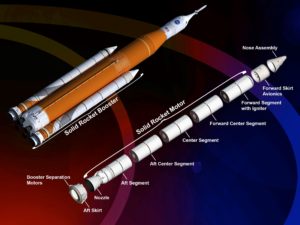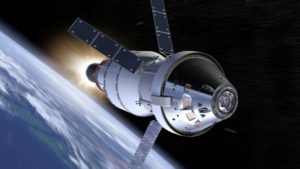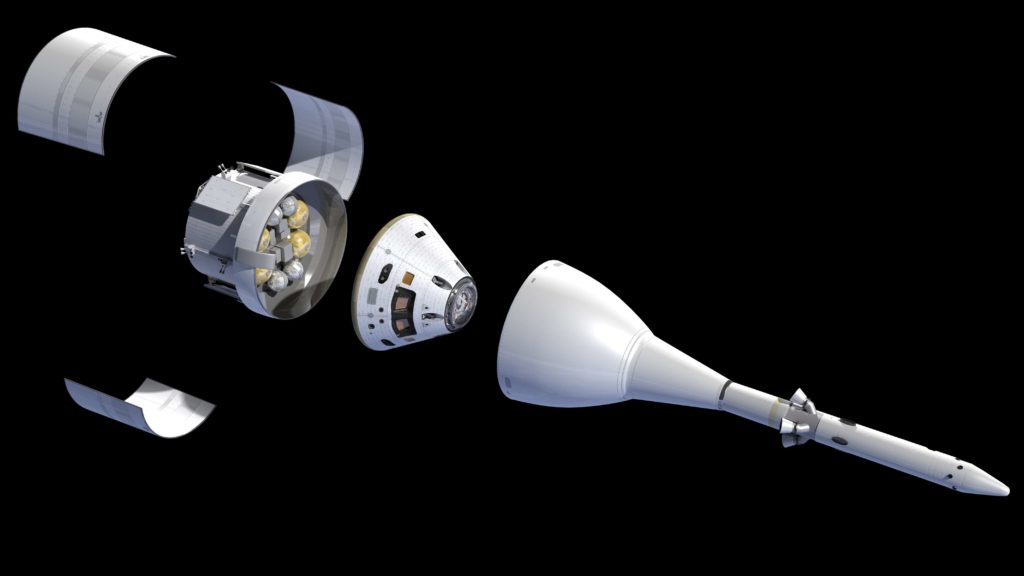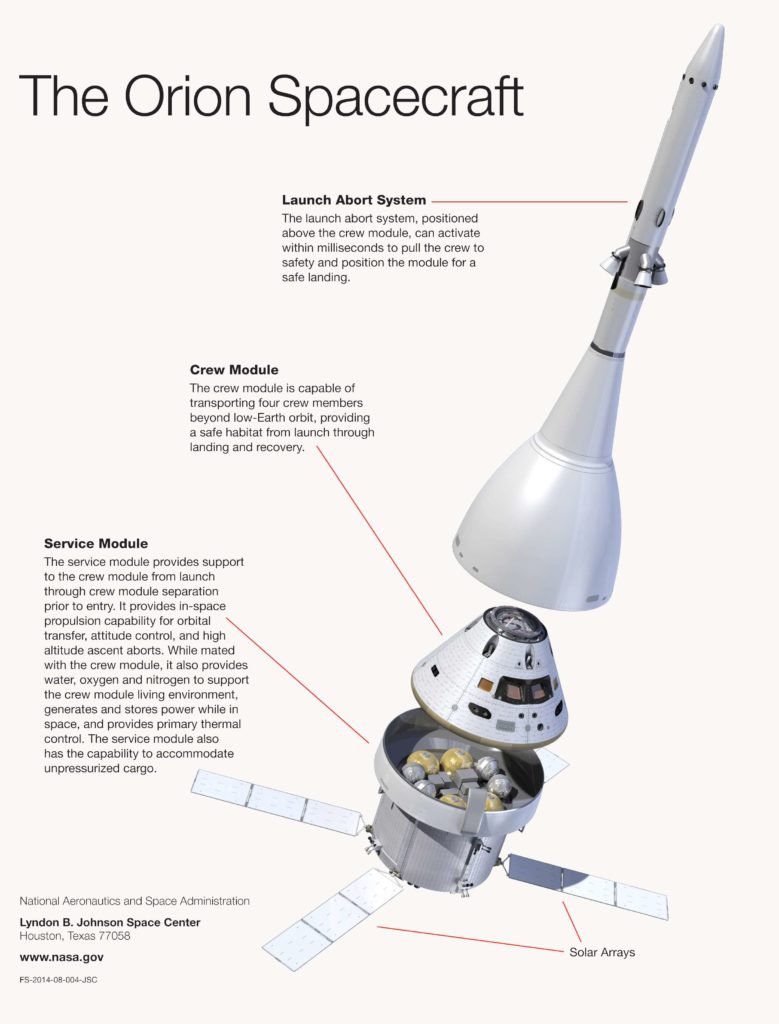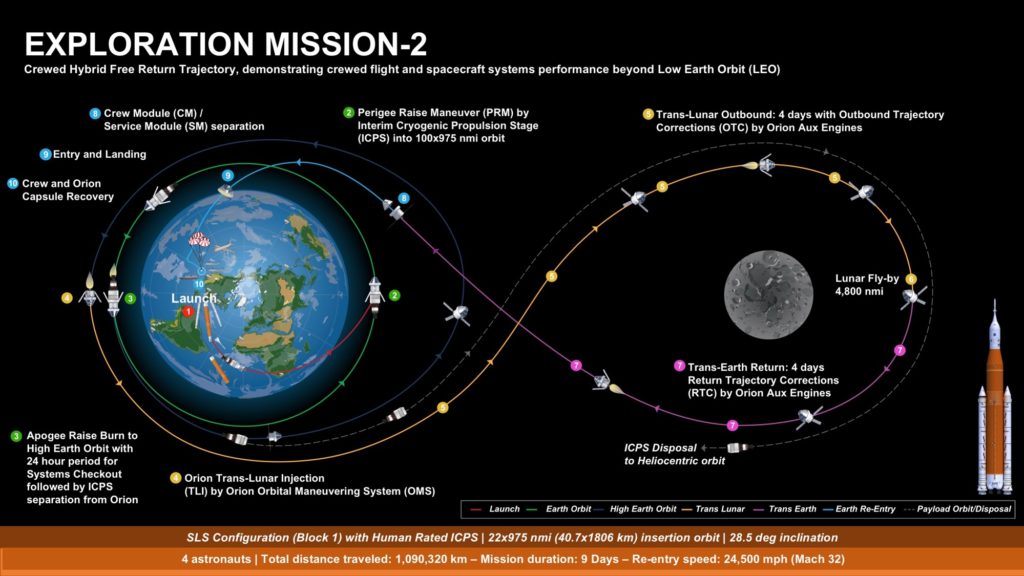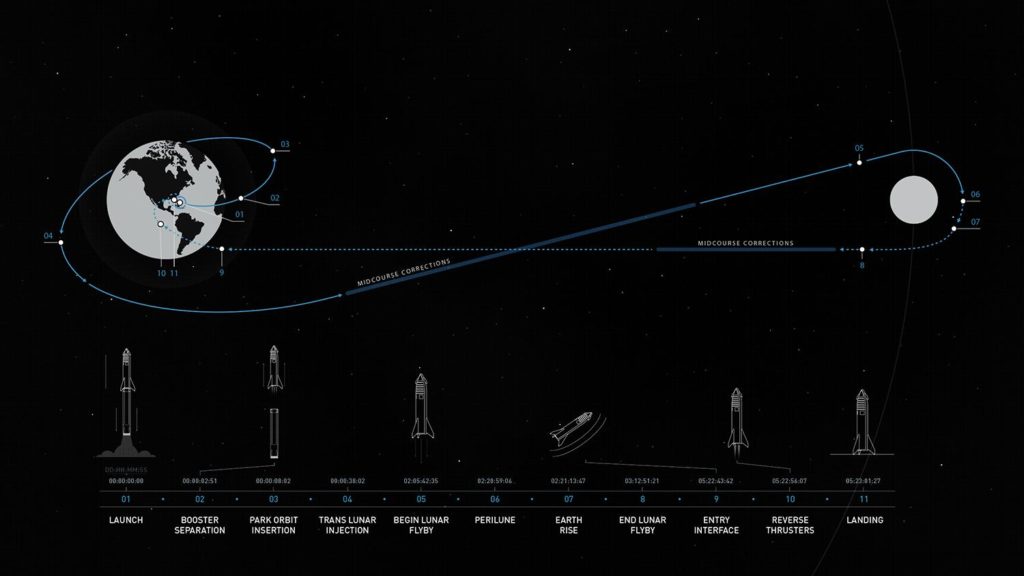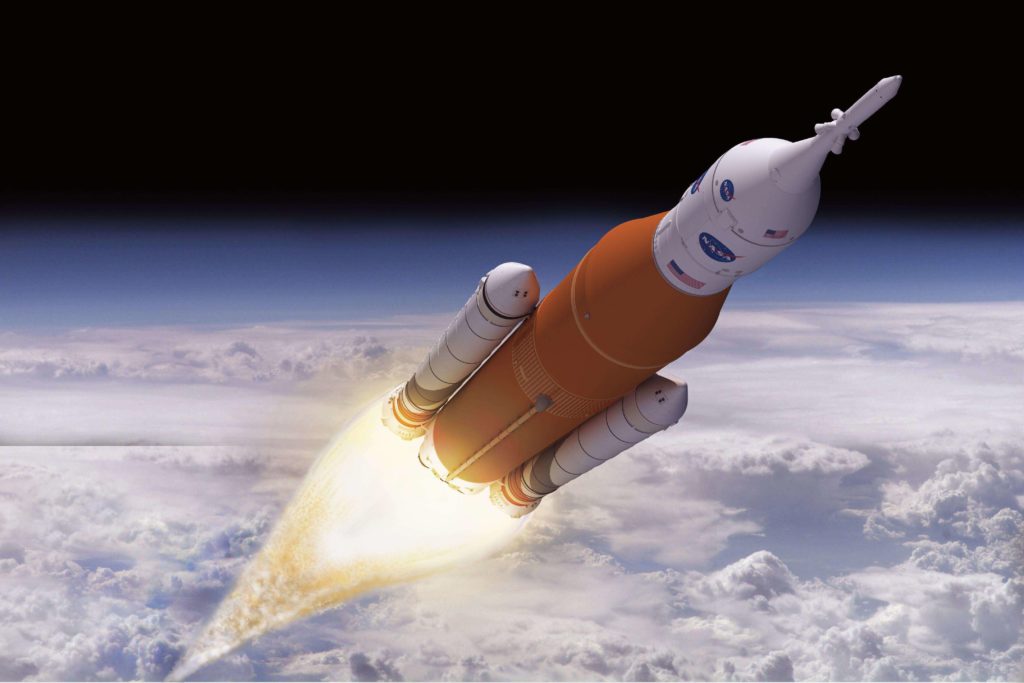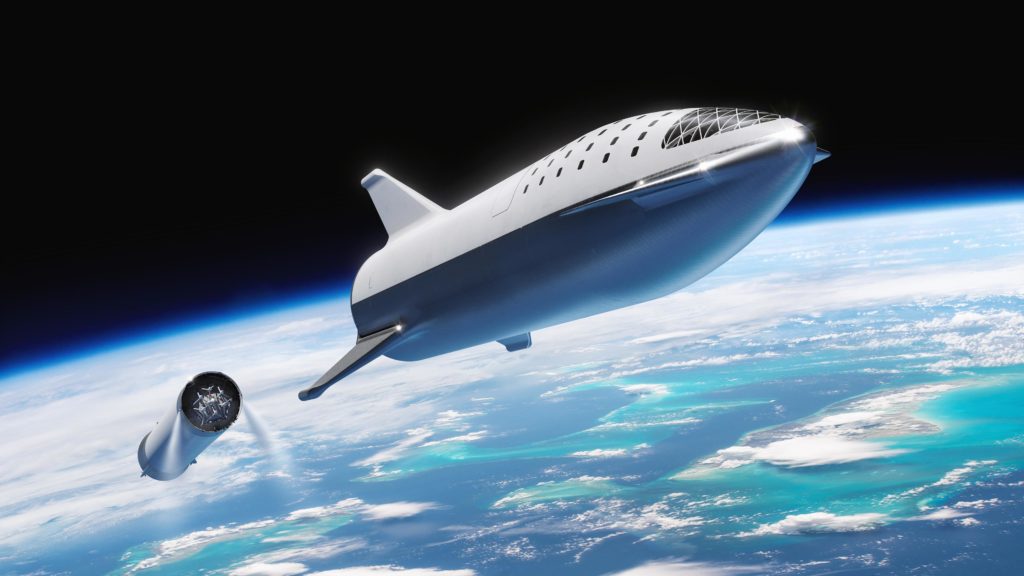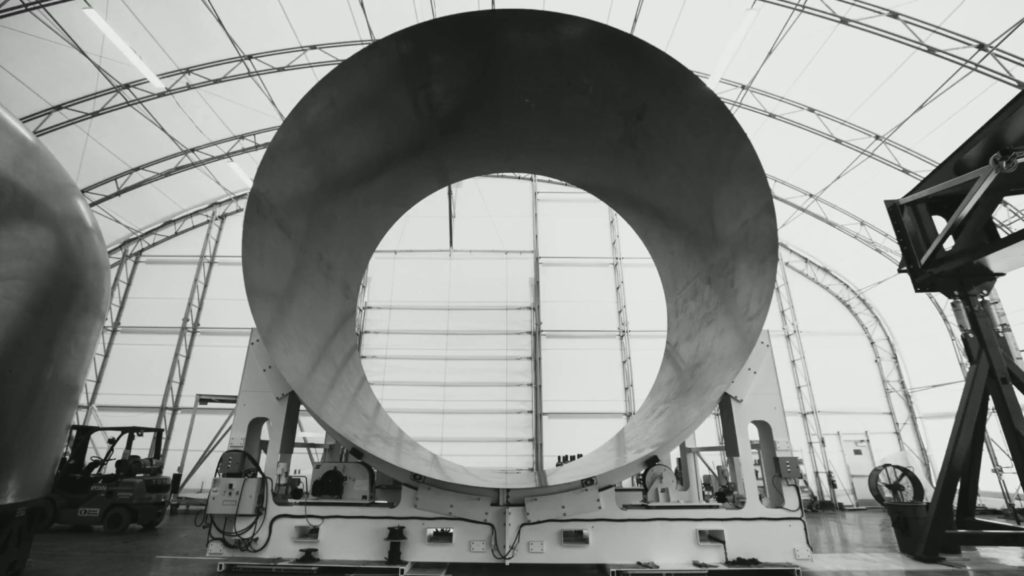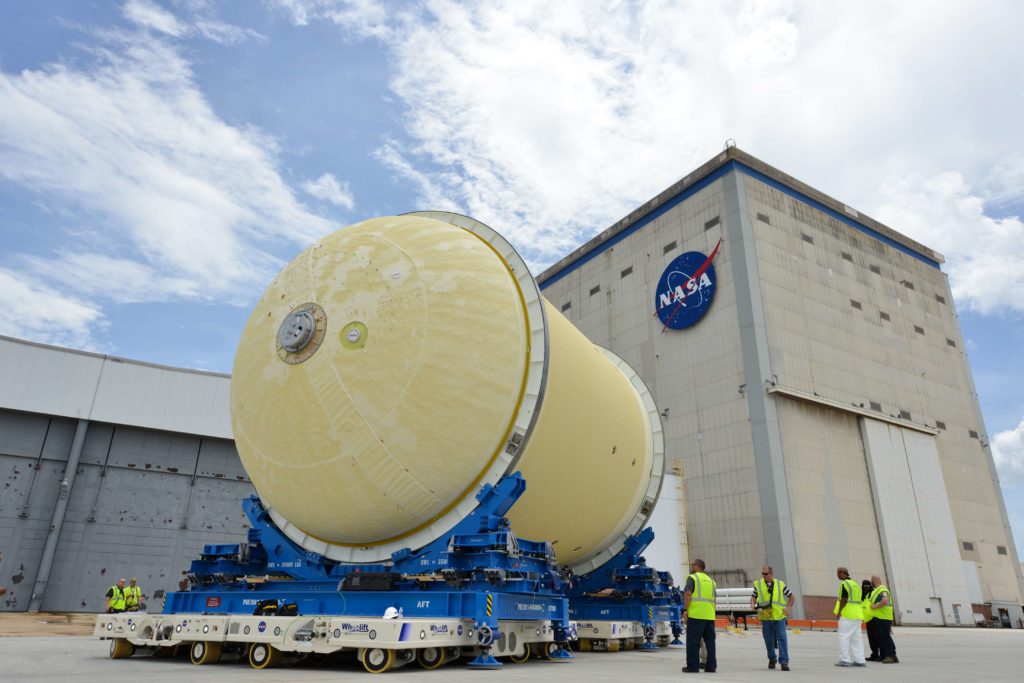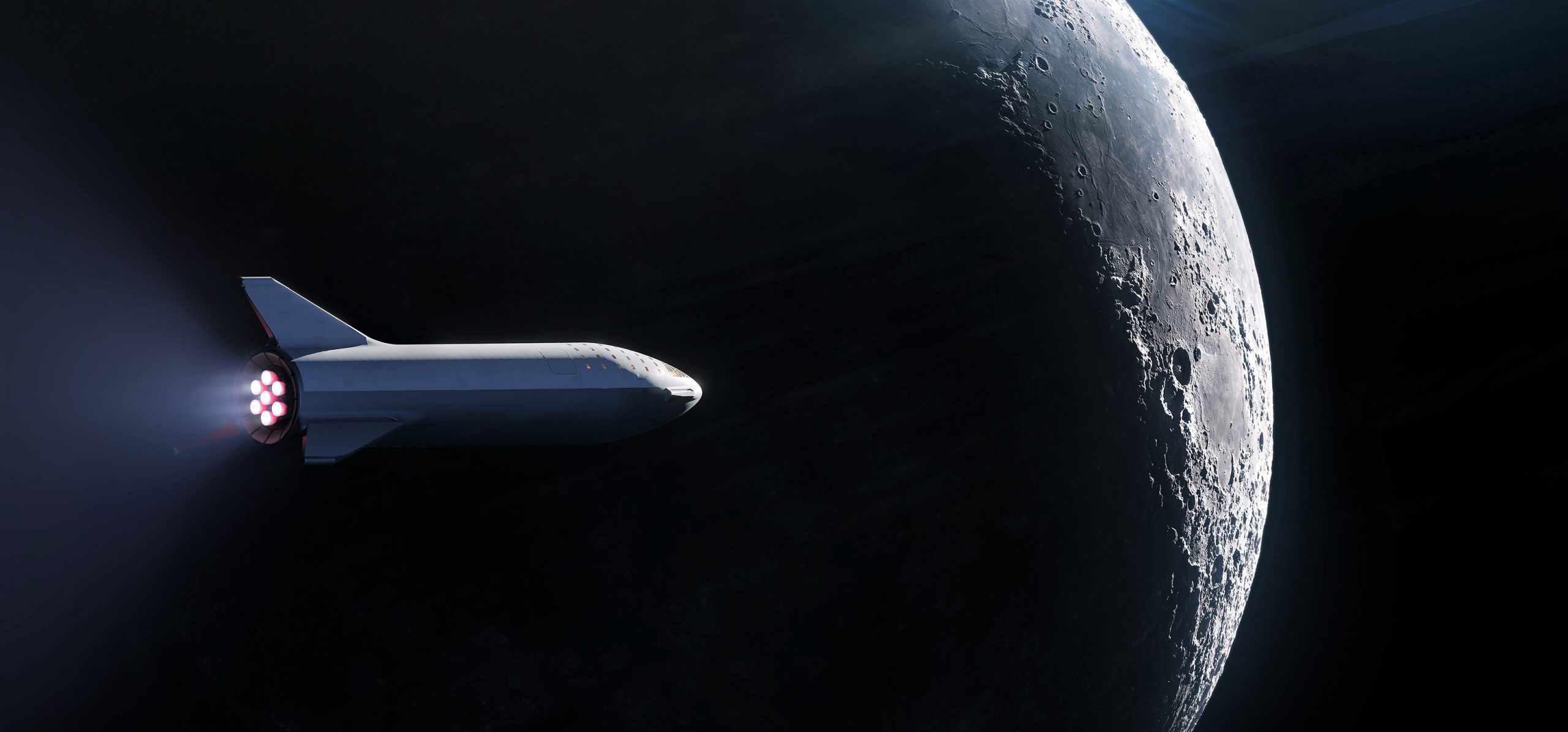
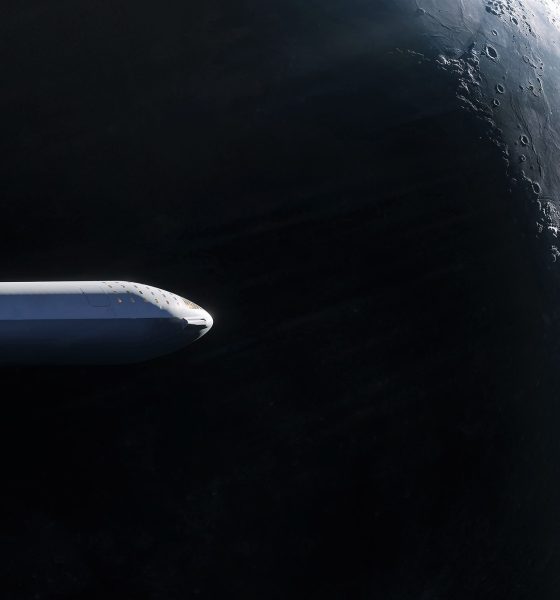
News
SpaceX and NASA accidentally set the stage for a new race to the Moon
Almost entirely driven by chance, SpaceX and NASA may soon find themselves in an unintentional race to return humans to the Moon for the first time in half a century.
Both entities – SpaceX with its next-generation BFR and NASA with its Shuttle-derived SLS – are tentatively targeting 2023 for their similar circumlunar voyages, in which NASA astronauts and private individuals could theoretically travel around the Moon within just months of each other, showcasing two utterly dissimilar approaches to space exploration.
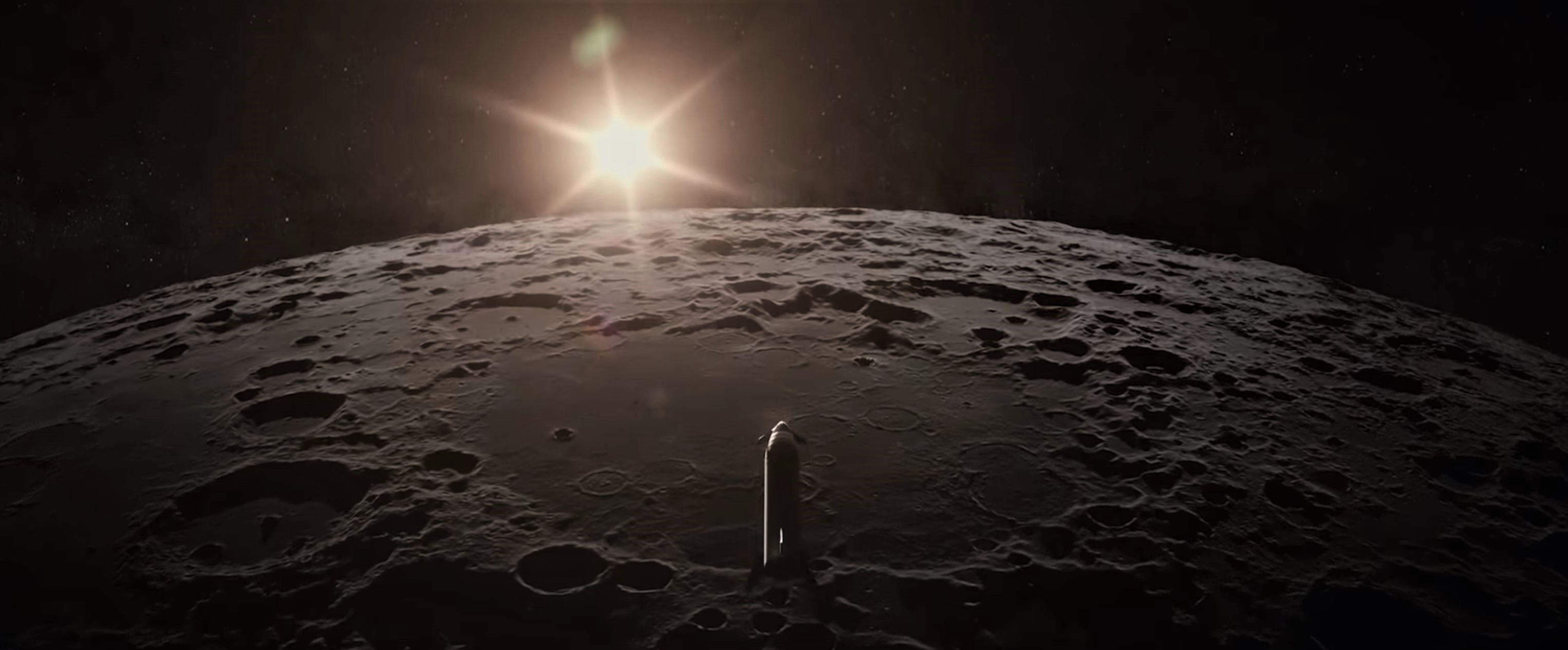
Over the course of no fewer than seven years of development, NASA’s SLS rocket and Orion spacecraft have run into an unrelenting barrage of issues, effectively delaying the system’s launch debut at a rate equivalent to or even faster than the passage of time itself. In other words, every month recently spent working on the vehicle seems to have reliably corresponded with at least an additional month of delays for the launch system.
Why these incessant delays continue to occur is an entire story in itself and demands the acknowledgment of some uncomfortable and inconvenient realities about the state of NASA’s human spaceflight program in the 21st century, but that is a story is for another time.
- SLS. (NASA)
- NASA’s Orion spacecraft, European Service Module, and ICPS upper stage. (NASA)
A different kind of paper rocket
Returning to SLS, a brief overview is in order to properly contextualize what exactly the rocket and spacecraft are and what exactly their development has cost up to now. SLS is comprised of four major hardware segments.
- The Core Stage: A massive liquid hydrogen/liquid oxygen rocket booster, this section is essentially a lengthened version of the retired Space Shuttle’s familiar orange propellant tank, while the stage’s four engines are quite literally taken from stores of mothballed Space Shuttle hardware and will be ingloriously expended after each launch (SLS is 100% expendable).
- Solid Rocket Boosters (SRBs): Minimally modified copies of the SRBs used during the Space Shuttle program, SLS’ SRBs have slightly more solid propellant and have had all hints of reusability removed, whereas Space Shuttle boosters deployed parachutes and were reused after landing in the Atlantic Ocean.
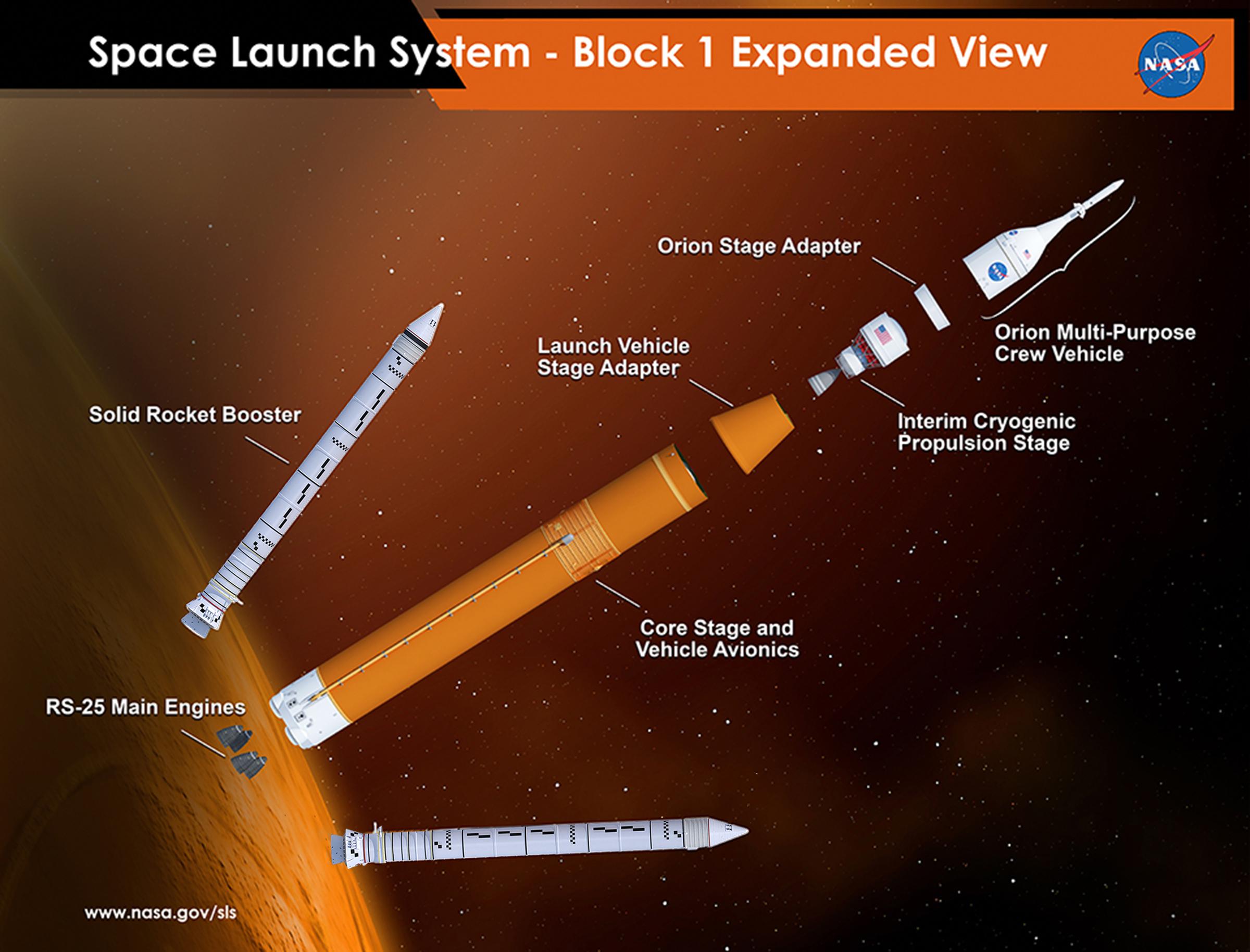
- The Upper Stage (Interim Cryogenic Propulsion System, ICPS): ICPS is a slightly modified version of ULA’s off-the-shelf Delta IV upper stage.
- The Orion spacecraft and European Service Module: Borrowing heavily from the Apollo Command and Service Modules that took humanity to the Moon in the 1960s and 70s, Orion has been in funded development in one form or another for more than 12 years, with just one partial flight-test to call its own. Orion’s development has cost the U.S. approximately $16 billion since 2006, with another $4-6 billion expected between now and 2023, a sum that doesn’t account for the costs of production and operations once development is complete.
- The Orion spacecraft and ESM. (NASA)
For the SLS core stage and SRBs, a generous bottom-rung estimate indicates that $14 billion has been spent on the rocket itself between 2011 and 2018, not including many billions more spent refurbishing and modifying the rocket’s aging Saturn and Shuttle-derived launch infrastructure at Kennedy Space Center. Of the many distressing patterns that appear in the above descriptions of SLS hardware, most notable is a near-obsessive dependence upon “heritage” hardware that has already been designed and tested – in some cases even manufactured.
Despite cobbling together or reusing as many mature components, facilities, and workforces as possible and relying on slightly-modified commercial hardware at every turn, SLS and Orion will somehow end up costing the United States more than $30 billion dollars before it has completed a single full launch; potentially rising beyond $40 billion by the time the system is ready to launch NASA astronauts.
Moonward bound
SLS’ first crewed mission, known as Exploratory Mission-2 (EM-2), brings us to the title – NASA’s mission planning has settled on sending a crew of four astronauts on what is known as a Free Lunar Return trajectory in the Orion spacecraft, essentially a single flyby of the Moon. Official NASA statements appear to be sending mixed messages on the schedule for EM-2’s launch, with September 2018 presentations indicating 2022 while a late-August blog post suggests that the crewed circumlunar mission is targeting launch in 2023.
As it happens, SpaceX announced its own plans for a (private) crewed circumlunar voyage less than two weeks ago. Funded in large part by Japanese billionaire Yasuka Maezawa, SpaceX’s hopes to send 10+ people to the Moon on its next-generation BFR launch vehicle, comprised of a fully-reusable booster and spaceship. Deemed Dear Moon by Maezawa, SpaceX is targeting an extremely ambitious launch deadline sometime in 2023, although CEO Elon Musk frankly noted that hitting that 2023 window would require all aspects of BFR booster and spaceship development to proceed flawlessly over the next several years.
Compared to the 10+ years and $30+ billion of development SLS and Orion will have taken before their first full launch, SpaceX is targeting the first orbital BFR test flights as early as 2020 or 2021, self-admittedly optimistic deadlines that will likely slip. Still, betting against SpaceX completing its first BFR launch sometime in the early to mid-2020s for something approximating Musk’s $2-10 billion development cost seems a risky move in the context of SpaceX’s undeniable track record of proving the old-guard wrong.
- NASA’s EM-2 circumlunar voyage. (NASA)
- SpaceX’s own circumlunar trajectory, nearly identical. (SpaceX)
- SLS Block 1. (NASA)
- BFR’s spaceship and booster (now Starship and Super Heavy) separate in a mid-2018 render of the vehicle. (SpaceX)
It must be noted that the apparent alignment of both SpaceX and NASA’s first crewed circumlunar missions with new rockets and spacecraft is a fluke of chance, and the fact that it may or may not take the shape of a second race to the Moon – pitting two dramatically different ideologies and organizational approaches against each other – is purely coincidental.
However, despite the undeniable fact that NASA and SpaceX are deeply and cooperatively involved through Crew and Cargo Dragon and despite Musk’s genuine affirmations of support and admiration for the space agency, it can be almost guaranteed that the world will look on in the 2020s with the same underlying emotions and motivations that were globally present during the Apollo Program. Rather than a battle of economic and nationalistic ideologies, the New Space Race of the 2020s will pit two (publicly) amicable private and public entities against each other at the same time as they work hand-in-hand to deliver crew and cargo to the International Space Station.
- An overview of BFR’s booster and spaceship, now known as Super Heavy and Starship. (SpaceX)
- SpaceX has already completed the first of many carbon-composite sections of its prototype spaceship. (SpaceX)
- SLS’ movable launch pad is very slowly being prepared for a 2020/2021 debut. (Tom Cross)
- SLS undoubtedly has several steps up on BFR in terms of volume of hardware in work, although target launch dates are quite similar for both rockets. (NASA)
Critically, this new “race” will be fairly illusory. Thanks to the fact that the new goal of human spaceflight appears to be the sustainable exploration of the solar system, there will inherently be no Apollo-style finish line for any one company or country or agency to cross. Rather than the Apollo Program’s shortsighted economic motivations and its consequentially abrupt demise, the end-result of this new age of competition will be the establishment of humanity as a (deep) spacefaring species, be it a temporary burst of effort or a permanent human condition.
Buckle up.
For prompt updates, on-the-ground perspectives, and unique glimpses of SpaceX’s rocket recovery fleet check out our brand new LaunchPad and LandingZone newsletters!

Investor's Corner
Tesla gets price target bump, citing growing lead in self-driving

Tesla (NASDAQ: TSLA) stock received a price target update from Pierre Ferragu of Wall Street firm New Street Research, citing the company’s growing lead in self-driving and autonomy.
On Tuesday, Ferragu bumped his price target from $520 to $600, stating that the consensus from the Consumer Electronics Show in Las Vegas was that Tesla’s lead in autonomy has been sustained, is growing, and sits at a multiple-year lead over its competitors.
CES 2026 validates Tesla’s FSD strategy, but there’s a big lag for rivals: analyst
“The signal from Vegas is loud and clear,” the analyst writes. “The industry isn’t catching up to Tesla; it is actively validating Tesla’s strategy…just with a 12-year lag.”
The note shows that the company’s prowess in vehicle autonomy is being solidified by lagging competitors that claim to have the best method. The only problem is that Tesla’s Vision-based approach, which it adopted back in 2022 with the Model 3 and Model Y initially, has been proven to be more effective than competitors’ approach, which utilizes other technology, such as LiDAR and sensors.
Currently, Tesla shares are sitting at around $433, as the company’s stock price closed at $432.96 on Tuesday afternoon.
Ferragu’s consensus on Tesla shares echoes that of other Wall Street analysts who are bullish on the company’s stock and position within the AI, autonomy, and robotics sector.
Dan Ives of Wedbush wrote in a note in mid-December that he anticipates Tesla having a massive 2026, and could reach a $3 trillion valuation this year, especially with the “AI chapter” taking hold of the narrative at the company.
Ives also said that the big step in the right direction for Tesla will be initiating production of the Cybercab, as well as expanding on the Robotaxi program through the next 12 months:
“…as full-scale volume production begins with the autonomous and robotics roadmap…The company has started to test the all-important Cybercab in Austin over the past few weeks, which is an incremental step towards launching in 2026 with important volume production of Cybercabs starting in April/May, which remains the golden goose in unlocking TSLA’s AI valuation.”
Tesla analyst breaks down delivery report: ‘A step in the right direction’
Tesla has transitioned from an automaker to a full-fledged AI company, and its Robotaxi and Cybercab programs, fueled by the Full Self-Driving suite, are leading the charge moving forward. In 2026, there are major goals the company has outlined. The first is removing Safety Drivers from vehicles in Austin, Texas, one of the areas where it operates a ride-hailing service within the U.S.
Ultimately, Tesla will aim to launch a Level 5 autonomy suite to the public in the coming years.
Elon Musk
Elon Musk’s Biggest Revelations on AI, Robots, and the Future of Work from the Moonshots Podcast

Elon Musk’s appearance on the Moonshots with Peter Diamandis podcast was packed with bold predictions, candid admissions, and surprising tech insights. The nearly three-hour conversation covered everything from artificial intelligence to humanoid robots, geopolitics, and the future of work. Here are the top 10 most intriguing takeaways:
-
Aggressive AGI Timeline Predictions
Musk offered a detailed view on when artificial general intelligence (AGI) could emerge, suggesting it may arrive sooner than many expect, emphasizing both transformative potential and risks.
-
U.S. vs. China in the AI Race
He discussed the strategic competition between the United States and China over AI development, noting that geopolitical dynamics will shape how and who leads in the next decades.
-
Future of Job Markets
Musk touched on how AI and automation could reshape employment, predicting massive boosts in productivity alongside potential disruptions in traditional work structures.
-
Clean Energy Transition
A recurring theme was the role of clean energy in future economies, with Musk reiterating the importance of scaling sustainable power generation and storage.
-
Humanoid Robots Are Coming
On the podcast, Musk elaborated on Tesla’s work on humanoid robots, hinting at timelines and applications that go beyond factories to general-purpose assistance.
-
Tesla Roadster “Last Human-Driven Car”
Outside the core discussion topics, Musk teased features of the upcoming Tesla Roadster — calling it “the best of the last of the human-driven cars” and suggesting safety won’t be its main selling point.
-
The Role of AI in Clean Energy and Robotics
Linking AI to both energy optimization and robotics, Musk explained how smarter systems could accelerate decarbonization and task automation across industries.
-
U.S. Innovation Leadership
Musk argued that maintaining American leadership in key tech sectors like AI, space, and robotics should be a national priority, with thoughtful policy and investment.
-
Job Creation vs. Job Elimination
While acknowledging automation’s disruptive effects, he also outlined scenarios where new industries and opportunities could emerge, particularly in AI, space, and advanced manufacturing.
-
Long-Term Vision for Humanity
Throughout the conversation, Musk revisited his long-term philosophical views — including a belief in humanity’s responsibility to become a multi-planetary and technologically empowered species.
Whether you agree with Musk’s optimism or not, the podcast offers a window into the thinking of one of the most influential figures in tech today, in and why his visions continue to spark debate and inspiration.
Elon Musk
Elon Musk just said some crazy stuff about the Tesla Roadster
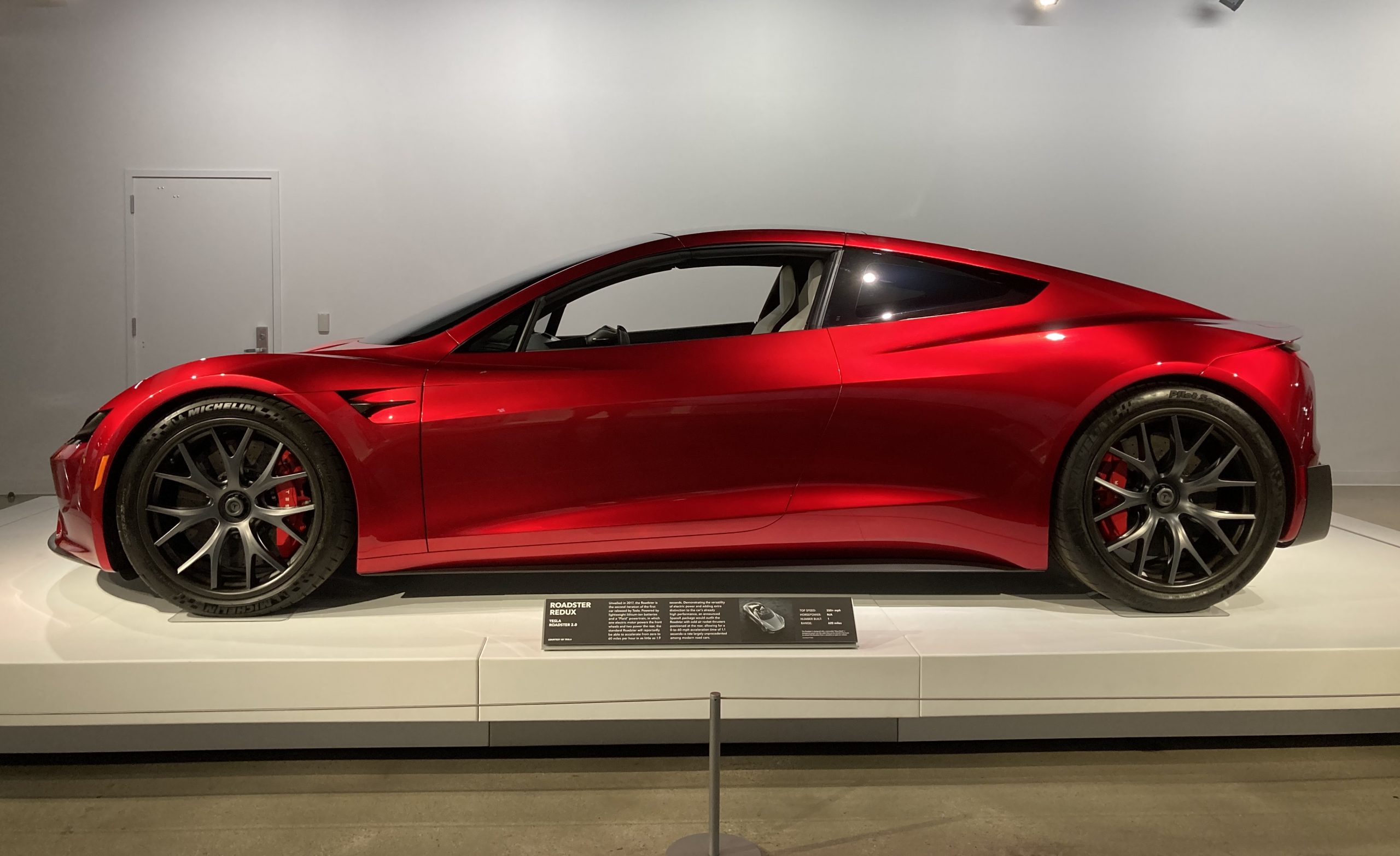
Elon Musk appeared on the Moonshots podcast with Peter Diamandis today to discuss AGI, U.S. vs. China, Tesla, and some other interesting topics, but there was some discussion about the upcoming unveiling of the Roadster, the company’s electric supercar that will arrive several years after it was initially slated for release.
Musk made some pretty amazing claims about the Roadster; we already know it is supposed to be lightning-fast and could even hover, if Tesla gets everything to happen the way it wants to. However, the car has some pretty crazy capabilities, some of which have not even been revealed.
On the podcast, Musk said:
“This is not a…safety is not the main goal. If you buy a Ferrari, safety is not the number one goal. I say, if safety is your number one goal, do not buy the Roadster…We’ll aspire not to kill anyone in this car. It’ll be the best of the last of the human-driven cars. The best of the last.”
🚨 Elon on the Roadster unveiling, scheduled for April 1:
— TESLARATI (@Teslarati) January 6, 2026
Musk makes a good point: people who buy expensive sports cars with ridiculous top speeds and acceleration rates do not buy them to be safe. They hope they are safe in case of an emergency or crash, but safety is not at the forefront of their thoughts, because nobody buys a car thinking they’ll crash it.
The Roadster is truly going to push the limits and capabilities of passenger vehicles; there’s no doubt about that. Tesla plans to show off the new version car for the first time on April 1, and Musk has only hinted at what is possible with it.
Musk said back in November:
“Whether it’s good or bad, it will be unforgettable. My friend Peter Thiel once reflected that the future was supposed to have flying cars, but we don’t have flying cars. I think if Peter wants a flying car, he should be able to buy one…I think it has a shot at being the most memorable product unveiling ever. [It will be unveiled] hopefully before the end of the year. You know, we need to make sure that it works. This is some crazy technology in this car. Let’s just put it this way: if you took all the James Bond cars and combined them, it’s crazier than that.”
Production is set to begin between 12 and 18 months after the unveiling, which would put the car out sometime in 2027. Hopefully, Tesla is able to stay on track with the scheduling of the Roadster; many people have been waiting a long time for it.
